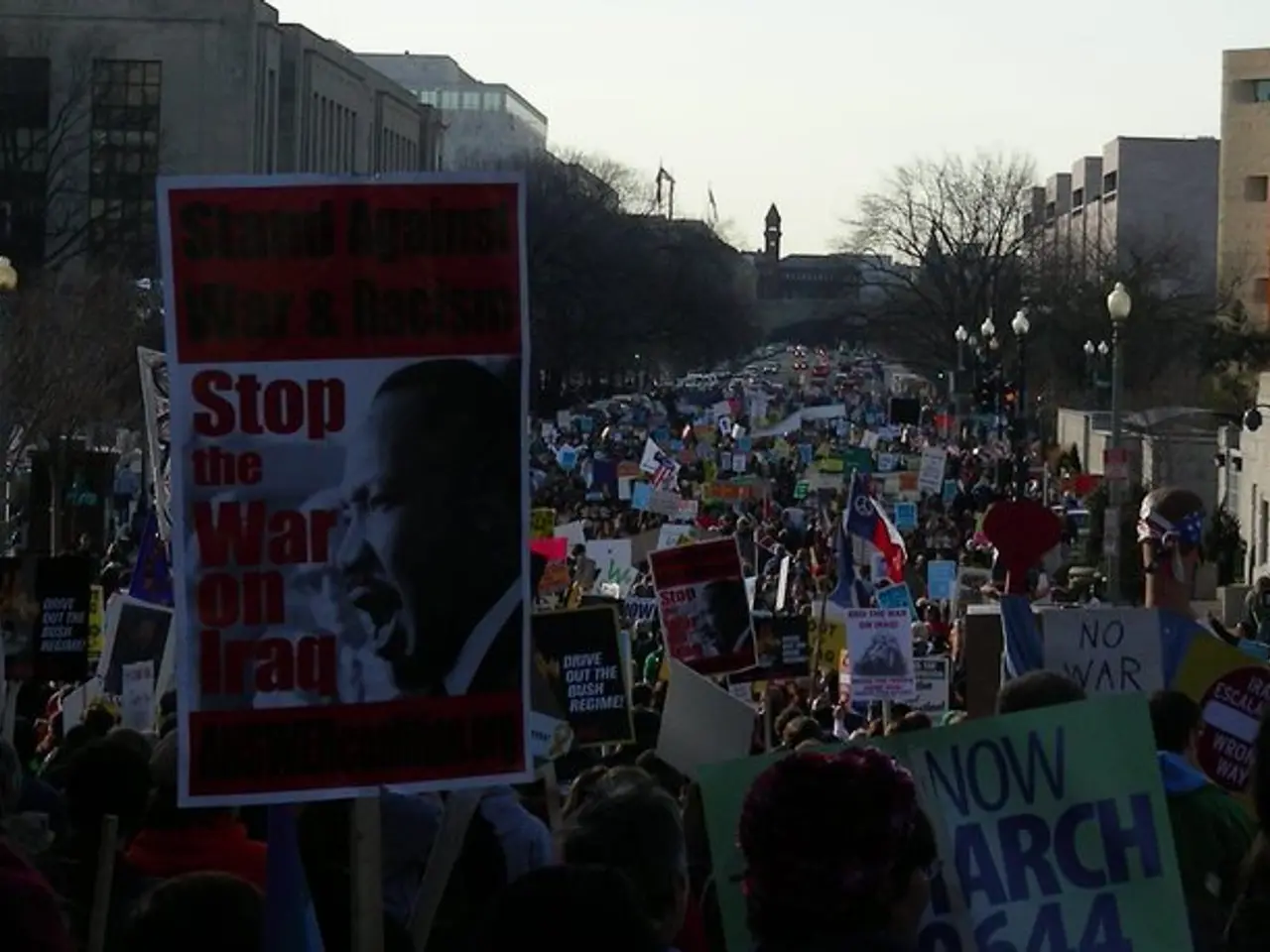"Insightful Film Review: Magnifying Visual Artistry and Narrative Telling"
The art of cinematography plays a pivotal role in shaping how audiences perceive, feel, and intellectually engage with films. By employing various techniques, directors and cinematographers weave a tapestry of visual and emotional experiences that transcend simple storytelling, transforming movies into profound artistic experiences.
One such technique is the use of colour, which can signify underlying themes and emotions. For instance, Christopher Nolan's films, such as "Inception" and "Dunkirk," often feature muted, desaturated colours, reflecting the bleakness of war and the complexity of the narratives. In contrast, Wong Kar-wai's masterpieces, like "In the Mood for Love" and "Chungking Express," utilise vibrant hues and slow-motion sequences to create a rich, sensory experience that mirrors the characters' emotional journeys.
Another technique that masterfully elevates films is the use of extreme close-ups (ECUs). These shots focus tightly on small details, like eyes or objects, to heighten emotional impact or reveal critical narrative elements. For example, in "Requiem for a Dream," ECUs on dilated pupils and drug paraphernalia intensify the sensory immersion, drawing viewers into the characters' struggles.
Anamorphic lenses, with their distinctive widescreen images and unique flares, also contribute to the cinematic feel of a film. "La La Land" used original 1950s Cinemascope anamorphic lenses to evoke the classic musical style, while drone cinematography offers dynamic aerial shots that capture vast landscapes or action sequences from new perspectives. This technique, enabled by technological advances, adds scope and grandeur, previously achievable only with helicopters.
Long takes, uninterrupted, extended single-shot sequences, immerse viewers in continuous action or emotion, showcasing technical skill and intensifying engagement. Handheld camera work, on the other hand, provides a raw, intimate, often chaotic feel that brings immediacy and realism to scenes, enhancing emotional connection.
Some films widely celebrated for their exceptional cinematography include "Mad Max: Fury Road," renowned for its practical effects and stunts, shot with intense, kinetic camera work that makes the non-stop car chases viscerally thrilling. "The Social Network" employs medium and medium close-up shots extensively to highlight emotional nuance and dialogue tension between characters, balancing frame focus and environment.
"The Mandalorian" innovatively uses virtual production with LED walls to create realistic, in-camera backgrounds that immerse viewers without heavy post-production reliance. Meanwhile, films like "The Grand Budapest Hotel," "Parasite," "Blade Runner 2049," and "Schindler's List" use framing, composition, camera movement, lighting, symbolism, and visual metaphors to create deeply emotional and visually stunning scenes that resonate with viewers on a subconscious level.
In conclusion, the synergy between cinematography and storytelling can elevate a movie from mere entertainment to a profound artistic experience. These elements, meticulously crafted, transform simple scenes into iconic moments that linger in our collective consciousness, offering rich material for analysis and discussion.
- Reviews often highlight the significant influence of cinematography on a film's narrative and emotional impact, praising directors and cinematographers for their artistic choices in colour, framing, camera work, and lens selection.
- Film festivals around the world showcase movies with exceptional cinematography, recognizing their contributions to the art of movies and entertainment.
- The use of anamorphic lenses, like in "La La Land," can evoke specific cinematic styles and add unique elements to the visual experience.
- Long takes and handheld camera work can intensify the emotional connection between a film and its audience, immersing viewers in continuous action or unrefined reality.
- Techniques such as extreme close-ups, like in "Requiem for a Dream," can heighten the emotional impact and reveal critical narrative elements, drawing viewers into intense scenes.
- Cinematography, when harmoniously blended with storytelling, can elevate a movie from plain entertainment to a profound artistic masterpiece, leaving lasting impressions and offering fertile ground for extensive analysis and discussion.







